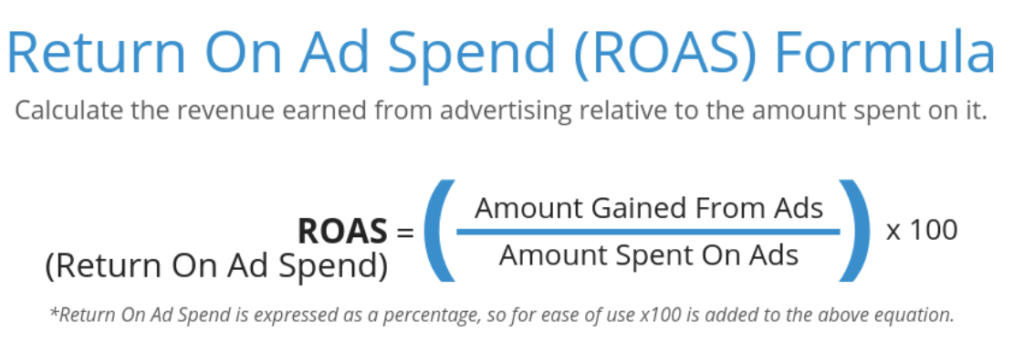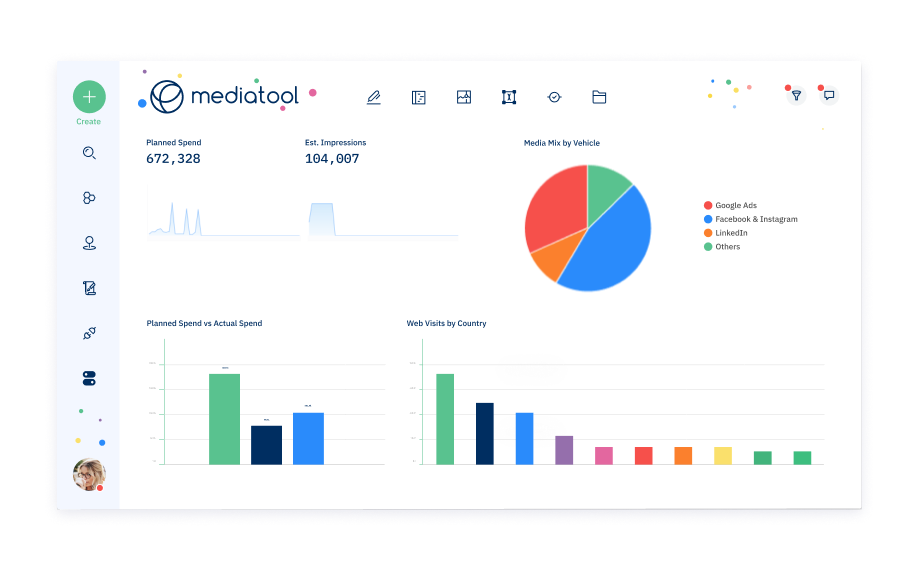Proving marketing ROI (return on investment) isn’t always easy. Especially for marketing agencies, who state that their biggest challenge is measuring and demonstrating marketing ROI to their clients.
Advertising and marketing pioneer, John Wanamaker, once said: “half the money I spend on advertising is wasted; the trouble is I don’t know which half.” Now, this isn’t always the case as all marketing activities have a part to play in building brand awareness. However, a lot of in-house teams certainly think this way. And there’s nothing more frustrating when you know you’re delivering great campaigns but the question inevitably pops up: “what’s the ROI?”
In this blog we’ll explain the different ways that top marketing agencies prove ROI to clients and how you can too.
How to Calculate Marketing ROI
When it comes to calculating ROI, there are some caveats. For example if you’re running organic social media campaigns or working on SEO and content marketing, it can take longer to see the full effects and can be tricky to measure specifically.
The basic calculation is:
ROI = gross profit – marketing investment / marketing investment x100

(Credit: The Online Advertising Guide)
If you’re calculating ROI for organic activities, you can work out how many conversions (such as leads or sales) you received from a specific piece of content and give it a monetary value. This acts as your ‘amount gained’ or ‘gross profit’ in the above calculation.
If you’ve worked with a client over a longer period of time, to get a better idea of long-term ROI, replace gross profit with customer lifetime value (CLV). CLV incorporates profit over a time period, which may work better for certain clients.
We’re marketers, not mathematicians. So if you struggle with calculating ROI, you can also use the Hubspot ROI calculator.
How Marketing Agencies Can Prove ROI to Clients
1. Set expectations
The reason proving marketing ROI or ROAS (return on ad spend) can be so difficult is that every client has different goals, campaigns, deliverables and budget. So even when you know you’ve generated the desired results, if clients don’t have the data to back it up they may reconsider the value your agency generates.
As every client is different, how you prove ROI has to be too. The key is to figure out how to present it in a way that each client is happy with, can understand and can share with the rest of their business. Once you show how the investment in your agency is worth it, customer retention will increase, so will testimonials and therefore customer acquisition.
Before embarking on a project, it’s important to set clear objectives and expectations. Expectations will be different for every client and their individual marketing KPIs. It’s crucial to have a conversation with clients to set realistic expectations. Maybe their old agency did X,Y, Z and they want better results. Fact is, the marketing landscape has changed a lot in the past few years. There’s more competition for organic and paid marketing and budgets are increasing every year. Having this discussion at the beginning of a project will help you set a foundation for what each party can expect to see in the results.
To maintain transparency with clients, many agencies use marketing tools to help display the data. For example, in Mediatool you can put pre-agreed targets and success metrics into your own marketing ROI dashboard that both your team and your clients can access.
2. Determine what marketing metrics to track
When reporting on campaign progress you don’t need to focus on every metric. By now you should have set a clear plan with your client and both parties should know what the key metrics are, tailored to their goals. What is a conversion for one client, may not be the purpose of the project for another. This goes for online and offline marketing, though tracking conversions for offline ads–like OOH and Print–can be much harder.
We’ve outlined the basic ROI calculation, but this will change depending on the metrics you and the client choose are important. For example if you’re running paid ads, you would use the above calculation and replace ‘gross profit’ with ‘paid ad revenue’. If you spent £10,000 on Google Search Ads (including agency wages), and made £40,000 in revenue, your ROI (or ROAS) is 400%. If your main conversion metric is leads, you might choose to find out from the client the cost value of each lead and focus your calculation on CPL (cost per lead), before working out ROI.

(Credit: The Online Advertising Guide)
Depending on the area of marketing or advertising, it can be beneficial to determine micro-conversions along the way so you and your client get the bigger picture of the customer journey. For example, an eCommerce brand may want to increase micro-conversions such as purchase frequency, average order value (AOV) or basket/cart abandonment. Micro-conversions can show customers moving through the marketing funnel and indicate that they will convert in the future, which you can allocate value to in your ROI report.
“Micro-conversions are the completion of small steps or secondary actions by a website visitor that indicate that they are going to convert”
To build a solid report, focus on key metrics that are specific to the campaign. Tracking the right metrics and making sure the data is correct can take a lot of time. Instead of doing this manually, why not try a platform like Mediatool? Integrate your client’s marketing and advertising channels, merge all the data into one dashboard and easily create reports to impress your clients.
3. Choose an Attribution Model
The purchase journey isn’t usually straightforward. Customers don’t always see your product and brand for the first time and purchase on the spot. This is why building an effective marketing funnel is essential. So companies can build relationships with potential customers across numerous touch points until the customer trusts the company enough to purchase.
How do you know what touch point is working though? Through attribution modeling. News flash, not all marketing results can be measured on the last interaction before converting!
Attribution models help marketers understand and assign value to stages of the customer journey (or sales funnel) to find what is generating leads. This means marketers get a full overview of what stages lead to the most conversions and where they can tweak others to improve conversion rates.
There are different attribution models out there and, again, how you use them and which you choose depends on the client and the goal of their campaign. If your client doesn’t already use attribution models, work with them to decide what’s best based on their objectives, organization and type of campaign.
How can this benefit your agency? Well, by measuring these touch points you can find what’s most effective at generating leads and use this information to deliver better results. But, in this context, you can measure the results of these touch points and use them in your reporting to prove ROI. Let’s say one month there’s a dip in performance, the attribution model can help you explain to your client why, or prove that all the touch points are performing well so results should follow soon.
4. How to analyze the metrics to show ROI
If your client is new you might compare metrics from before your agency was enlisted, to current performance. However, trends change throughout the year so that might be representative. Because of this, many agencies use YoY (year on year) ROI reporting.
For example, if your client is an eCommerce brand, there will always be an increase in sales around Black Friday, regardless of whether they ran a promotion or not, as consumers feel the pressure to buy. In contrast, if your goals are around paid social ad engagement, they’re usually low around Christmas time as people are busy with festivities and spend less time on social media. The same goes for industry updates, ad performance may be affected by iOS 14 or email campaigns dipping due to iOS 15.
Clients with large seasonal or product release campaigns might only want an analysis of a specific product or landing page. If you’re only running paid social ads for a client, they may prefer you to report on ROAS.
ROAS calculation:
ROAS = Amount gained from ads / amount spent on ads x 100

(Credit: The Online Advertising Guide)
To properly analyze the data you need to track results for your specific work. Using UTM parameters is helpful for agencies to see exactly where their efforts are producing results and where they could be improved. If you’re still manually reporting your client data you’re leaving room for human error and mistakes that could give the wrong information and make your client lose trust in your agency. Ensure your data is always correct and create UTM parameters in Mediatool, making it easier for you to demonstrate the value of your work.
5. What tools can help demonstrate marketing ROI
Whether it’s offline advertising or digital marketing, one thing that’s for sure is that you’re going to end up with a lot of data. One of the reasons it’s so important to determine metrics to measure and report on is because otherwise you could waste days with your head stuck in the data, still struggling to create a positive report.
To reduce the workload that comes with the amount of data, it’s essential to use tools to help you create reports. There are alot of tools out there, we’re talking Google Analytics, Google Ads, Google Search Console, Bing Ads, Facebook Business Manager… you get the gist! These tools are great for getting granular data from your campaigns. However, it is still a laborious task pulling reports and data from all of the platforms at once, let alone making it digestible for clients who really just want a top level ROI report.
This is where Mediatool comes in. By integrating all of these channels above (and more!) all of your client’s data populates in real-time into a simple dashboard. You set your targets and budget plans and can review them along with the results you’ve generated. Better yet, you can create custom reports based on the metrics your client cares most about, so the reports generate themselves and all you have to do is download it and share.
Mediatool is also built for teams to collaborate, so you and your clients can have joint access to the dashboards and check performance themselves.

The best way to prove ROI to clients
How you prove ROI to your clients depends on your services and your client’s objectives. Being good at demonstrating ROI is a skill that agencies must hone in order to keep clients happy and appear as the expert in that area of marketing. By using the steps above you should be able to develop an ROI strategy for every client.
While clients care about ROI and so should you, remember there are other ways your agency can illustrate your effectiveness. One of the best ways to prove ROI to clients is by showing that this is you and your team’s area of expertise. Showing clients that they can trust your agency to do what’s best for their campaigns. Being personable and helpful where you can and highlighting that their success is your success and vice versa. It’s a collaborative process. Once you start viewing proving ROI as building a relationship with your clients, that’s when the numbers will click!
If you’d like to find out more about how agencies streamline their processes with Mediatool, take a look here.





